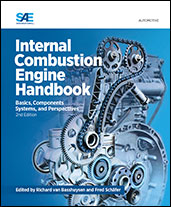Technical Paper
3DCFD-Modeling of a Hydrogen Combustion-Process with Regard to Simulation Stability and Emissions
2023-06-26
2023-01-1209
In the context of the energy transition, CO2-neutral solutions are of enormous importance for all sectors, but especially for the mobility sector. Hydrogen as an energy carrier has therefore been the focus of research and development for some time. However, the development of hydrogen combustion engines is in many respects still in the conception phase. Automotive system providers and engineering companies in the field of software development and simulation are showing great interest in the topic. In a joint project with the industrial partners Robert Bosch GmbH and AVL Germany, combustion in a H2-DI-engine for use in light-duty vehicles was methodically investigated using the CFD tool AVL FIRE®. The collaboration between Robert Bosch GmbH and the Institute for Mobile Systems (IMS) at Otto von Guericke University Magdeburg has produced a model study in which model approaches for the combustion of hydrogen can be analyzed.

